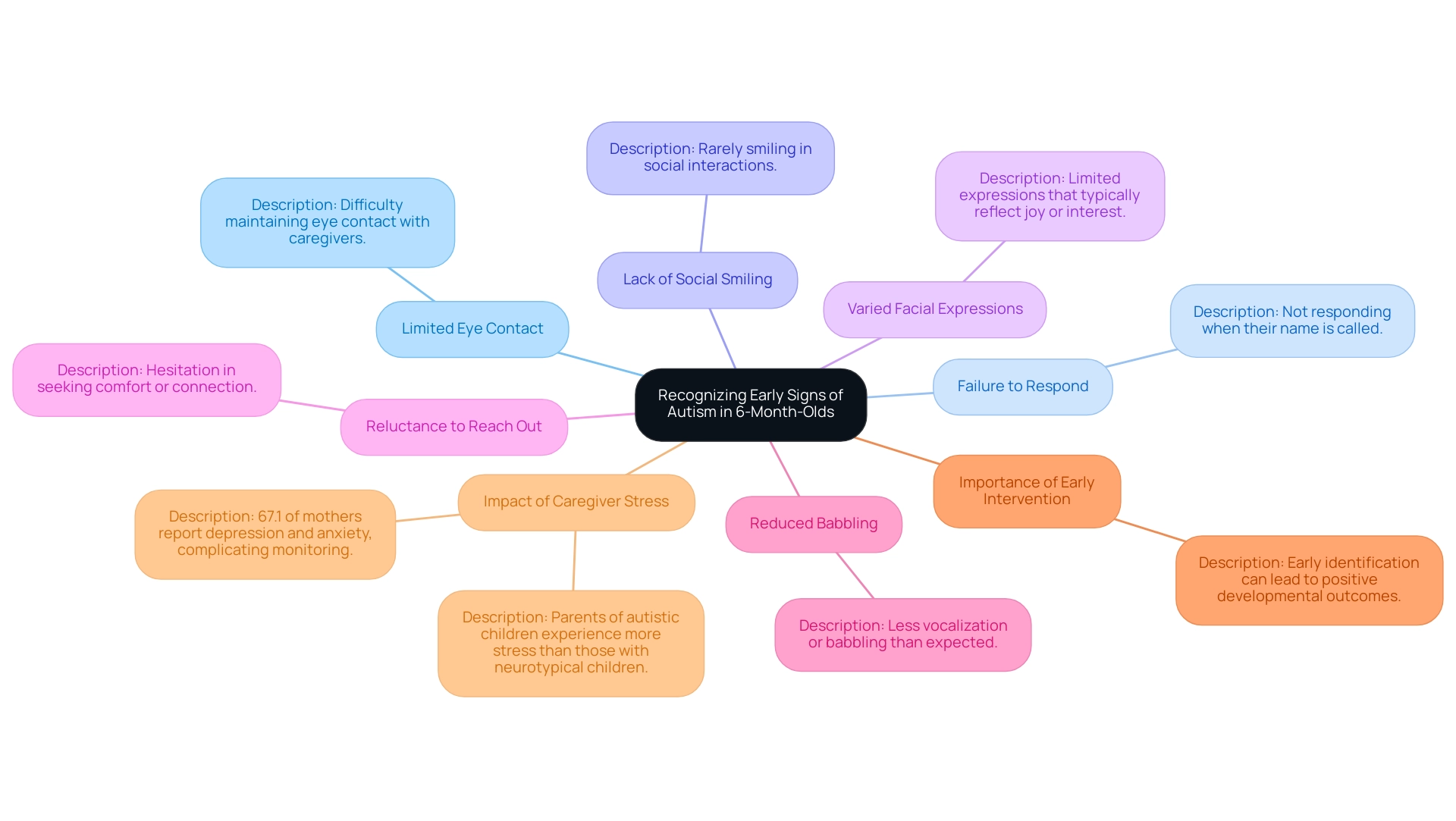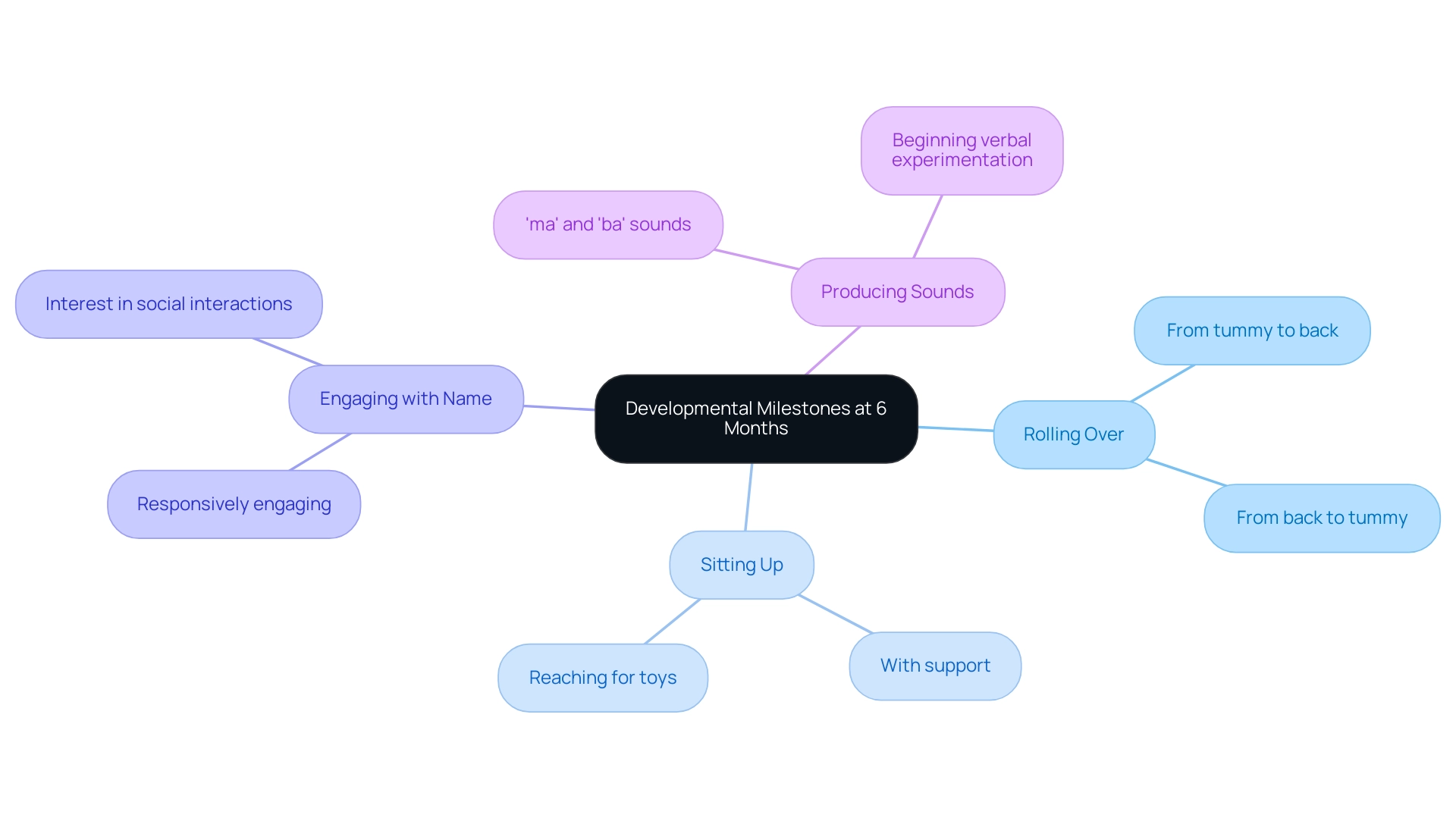Introduction
Navigating the complexities of Autism Spectrum Disorder (ASD) can be a daunting journey for parents, yet understanding its nuances is crucial for fostering their child's development. As the prevalence of autism continues to rise, equipping oneself with knowledge about early signs and effective interventions becomes imperative.
From recognizing subtle behavioral cues in infants to tracking essential developmental milestones, parents play a pivotal role in identifying potential challenges early on. This article delves into the critical aspects of autism, offering insights into:
- Early identification
- The importance of timely intervention
- Valuable resources that empower families
By staying informed and proactive, parents can ensure that their children receive the support they need to thrive.
Understanding Autism: A Brief Overview
Autism Spectrum Disorder (ASD) is a complex neurodevelopmental condition that influences communication, behavior, and social interaction in unique ways for each individual. This variability can complicate the identification process, making it essential for caregivers to equip themselves with knowledge about autism. The significance of early identification cannot be overstated; studies indicate that individuals who receive two years of intensive Applied Behavior Analysis (ABA) therapy before the age of three demonstrate significantly greater improvements in cognitive and language skills compared to those who do not receive early intervention.
In a recent survey emphasized by Autism Parenting Magazine, over one-third of guardians and caregivers of autistic individuals indicated utilizing ABA therapy to assist their offspring in overcoming the challenges of ASD. Understanding the signs of autism 6 months after birth—such as challenges in social interactions, communication obstacles, and repetitive behaviors—enables caregivers to become attentive observers of their offspring's development. By identifying the signs of autism 6 months promptly, caregivers can pursue the needed assistance, ultimately promoting a proactive strategy that can result in improved outcomes.
As noted by experts, understanding the nuanced characteristics of autism is vital, especially given the rising prevalence rates, which surged from 6.7 per 1,000 individuals in 2000 to a concerning 27.6 per 1,000 by 2020, as reported by the ADDM Network. This increase highlights the pressing need for vigilance and responsiveness in addressing developmental concerns. Additionally, discussions surrounding the term 'profound autism' reflect ongoing debates within the autism community, underscoring the complexity and diversity of experiences among individuals with ASD.
Recognizing Early Signs of Autism in 6-Month-Olds
At six months, it's crucial for caregivers to attentively monitor for signs of autism 6 months in their offspring's social interaction and communication signals, as prompt identification can greatly influence developmental results. Key indicators that may suggest signs of autism 6 months include:
- Limited eye contact
- A noticeable failure to respond when their name is called
- A lack of social smiling
- Varied facial expressions that typically reflect joy or interest
A reluctance to reach out for comfort or connection can be one of the signs of autism 6 months. Reduced babbling or a lack of vocalization are important signs of autism 6 months, which are critical for early communication. While recognizing the signs of autism 6 months doesn’t definitively indicate autism, it empowers parents to monitor their offspring's development closely and seek guidance from pediatricians.
It's important to note that 67.1% of mothers reported experiencing both depression and anxiety symptoms, which can complicate the process of monitoring a young one's development. As current research underscores, early intervention can lead to positive outcomes, reinforcing the idea that success is achievable even when an individual meets the criteria for ASD. As stated in a recent study, 'doing well is possible even when a young person continues to meet the criteria for ASD.'
Interacting with healthcare experts and support networks is essential, particularly given that guardians of individuals with autism frequently endure greater levels of stress than those with neurotypical individuals. Additionally, understanding that around 2.18% of adults in the US are autistic, with many facing underemployment or unemployment, highlights the importance of early identification and intervention. By staying alert and knowledgeable, caregivers can play a pivotal role in their child's developmental journey.

Developmental Milestones: What to Look For at 6 Months
At six months, parents should be aware of the signs of autism as infants typically reach several important developmental milestones that serve as benchmarks for their growth. These include:
- Rolling over from tummy to back and back again.
- Sitting up with support while beginning to reach for toys.
- Responsively engaging with their name, alongside a burgeoning interest in social interactions.
- Producing sounds such as 'ma' and 'ba', which mark the beginning of verbal experimentation.
Tracking these milestones is crucial for parents, as they provide insights into typical development. Pediatrician Carrie Brown emphasizes,
The ability to track an object is important because the inability to do so may indicate a visual or brain impairment, just like not turning their head to sounds could indicate a hearing issue.
Awareness of these signs becomes vital, especially since conditions like hand, foot, and mouth disease can lead to rashes and sores, potentially delaying developmental milestones. Notably, babies can begin experimenting with walking as early as 9 months, which highlights the progression of skills as they grow. The case study titled 'Baby Development Milestones: 7 to 9 Months' illustrates that during this stage, babies develop skills for exploring their environment, including expressing emotions and recognizing favorite toys.
If your offspring is not reaching these milestones or demonstrating signs of autism that raise concerns, it is advisable to consult with a pediatrician to discuss your observations and seek guidance.

When to Seek Help: Taking Action on Concerns
When you observe concerning signs of autism 6 months in your offspring or notice they are not meeting developmental milestones, it is crucial to consult a healthcare professional. Studies show that prompt support can significantly improve results, with youngsters who commence therapy by age two being three times more likely to succeed in inclusive educational environments than those who begin afterwards. Furthermore, a study by Vernon et al. (2019) reported an average cognitive ability score of 90.67 for youth in initial support programs, compared to 68.36 for those who did not receive such assistance, highlighting the cognitive advantages of prompt help.
To take action, consider the following steps:
- Schedule an appointment with your pediatrician to share your observations and concerns.
- Request a developmental screening or evaluation to better understand your offspring's needs.
- Investigate nearby preliminary assistance programs that can offer important resources and support customized to your youngster's development.
Additionally, a case study by Green et al. (2020) discovered that youngsters in early support programs had higher average scores in expressive and receptive language abilities, with scores of 57.5 and 57.7, respectively, in comparison to their counterparts.
Remember, seeking help is not just a precaution; it is a proactive measure that can lead to meaningful, positive changes for your offspring. As noted by Fayge Orzel,
Discover ABA therapy intervention techniques that empower growth and learning for individuals of all ages.
Your dedication to proactive measures can establish the groundwork for your offspring's future achievements.
Resources for Parents: Support and Information on Autism
Parents looking to enhance their understanding and support for autism can turn to an array of invaluable resources designed specifically for their needs. The Autism Society stands out as a leading organization, offering comprehensive information and access to local resources tailored to families. The CDC plays a vital role in this landscape, having monitored Autism Spectrum Disorder (ASD) since 1996, providing essential data, and developing early identification resources to help families.
With 1 in every 100 young individuals diagnosed with autism according to the World Health Organization, these resources are essential for prompt assistance. It is also important to note that the average ages of diagnosis and first intervention can vary widely between states, highlighting the need for localized support and awareness. Furthermore, the ADDM Network's tracking of early identification progress shows that the cumulative incidence of ASD identification among youths aged 4 has increased over time, indicating the effectiveness of early detection efforts.
Local support groups and online communities serve as lifelines, connecting caregivers with others who face similar challenges, fostering a sense of belonging. Engaging with these groups can be especially advantageous, as shown by findings indicating high levels of depressive symptoms in 72.5% and anxiety in 80.2% of mothers with kids on the spectrum. Staying connected through newsletters and dedicated websites also allows guardians to keep abreast of the latest research, updates from the Autism Society and CDC, and effective strategies for support.
By leveraging these resources, parents can empower themselves with knowledge and a supportive community as they navigate their child's developmental journey.
Conclusion
Understanding Autism Spectrum Disorder and its implications is the first step towards supporting children in their developmental journey. Early identification of autism signs, such as limited eye contact or reduced social engagement, plays a crucial role in ensuring timely intervention. Research consistently demonstrates that children who receive early support, particularly before the age of three, experience significant advantages in cognitive and language skills. This proactive approach can lead to improved outcomes, empowering parents to make informed decisions about their child's care.
Recognizing developmental milestones is equally important, as it provides a framework for monitoring growth and addressing concerns. Parents should remain vigilant and consult healthcare professionals whenever they notice potential delays or atypical behaviors. The importance of seeking help cannot be overstated; early intervention programs have proven to yield substantial cognitive benefits, setting the stage for success in inclusive environments.
Moreover, a wealth of resources is available to assist parents on this journey. Organizations like the Autism Society and the CDC offer valuable information and local support networks, fostering a sense of community among families navigating similar challenges. By staying informed and connected, parents can not only enhance their understanding of autism but also advocate effectively for their child's needs.
Ultimately, the commitment to being proactive, informed, and engaged can significantly shape a child's developmental trajectory. By recognizing signs early, seeking timely intervention, and accessing available resources, parents can play a pivotal role in their child's growth, ensuring they receive the support necessary to thrive.
Frequently Asked Questions
What is Autism Spectrum Disorder (ASD)?
Autism Spectrum Disorder (ASD) is a complex neurodevelopmental condition that affects communication, behavior, and social interaction in unique ways for each individual.
Why is early identification of autism important?
Early identification is crucial because studies show that individuals who receive two years of intensive Applied Behavior Analysis (ABA) therapy before age three demonstrate significantly greater improvements in cognitive and language skills compared to those who do not receive early intervention.
What are some signs of autism to look for at six months?
Key signs of autism at six months include limited eye contact, failure to respond when their name is called, lack of social smiling, varied facial expressions that typically reflect joy or interest, reluctance to seek comfort, and reduced babbling or vocalization.
How can caregivers monitor their child's development for signs of autism?
Caregivers can closely observe their child's social interactions and communication signals, and if they notice concerning signs, they should seek guidance from pediatricians.
What is the prevalence of autism, and why is it significant?
The prevalence of autism has increased from 6.7 per 1,000 individuals in 2000 to 27.6 per 1,000 by 2020, highlighting the need for vigilance in addressing developmental concerns.
What challenges do caregivers of individuals with autism face?
Caregivers often experience higher levels of stress and may also face mental health challenges, such as depression and anxiety, which can complicate the monitoring of their child's development.
What percentage of adults in the US are autistic, and what employment challenges do they face?
Approximately 2.18% of adults in the US are autistic, with many facing underemployment or unemployment, underscoring the importance of early identification and intervention.
What role do healthcare experts and support networks play for caregivers?
Interacting with healthcare experts and support networks is essential for caregivers, as they can provide guidance and support in navigating the challenges associated with autism.




